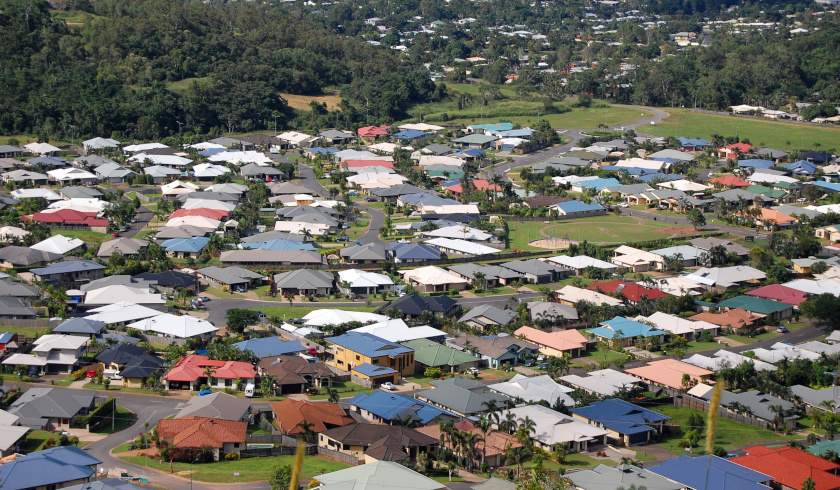High listings point to big discounts on property in January
Investors looking to snap up a bargain might soon be able to do so, as for the most part, there are some decent discounts on offer, analysis of listings data reveals.

This is creating significant competition between vendors, increasing pressure on them discount prices in order achieve a sale. This buyers’ market saw about 75 per cent of all properties sold around the country through private treaty sell for less than their original listing price, according to CoreLogic research analyst Cameron Kusher.
The last three months recorded a national median vendor discount of -5.7 per cent, the highest percentage since August 2012 and last year’s -4.6 per cent.
“The widening gap between seller and buyer price expectations reflects the fact there are fewer active buyers in the market and as a result vendors that are serious about selling may need to make some sizeable price adjustments in order to sell,” Mr Kusher said.
“With housing market conditions continuing to deteriorate, buyers thin on the ground and a high volume of stock listed for sale, it is reasonable to expect that over the coming months vendor discounting may increase further.
“For vendors serious about selling, this data highlights the importance in setting realistic prices, marketing the property as effectively as possible and being willing to adjust prices to meet a market with far fewer buyers than have been active over recent years.”
The Property Pulse also analysed the major capital city and regional markets across the country during January 2019:
Combined capitals
The median discount for the combined capitals was -6.3 per cent, the largest discount in 10 years, and larger than January 2018’s -4.7 per cent.
The report noted that this this decline mirrors those experienced during the time of the GFC.
Combined regionals
The combined regional median discount is currently at -5.2 per cent, which has not fallen as far as the combined capital median over the last year, which a year ago was at -4.5 per cent.
NSW
Capital
Sydney property is currently experiencing 13-year high discounts, currently sitting at -7.5 per cent, accelerating from last year’s -4.8 per cent.
Regional
While not as drastic as Sydney, regional NSW’s discounting has increased to 4.9 per cent from last year’s 4 per cent, with prospects of discounts increasing further.
Victoria
Capital
Melbourne’s vendor discounting is at its highest on record at 7 per cent, rising previously from 3.6 per cent a year ago.
Regional
Much like regional NSW was to Sydney, regional Victoria saw a slight increase in comparison to Melbourne, currently sitting at -4.3 per cent and increased from -3.8 per cent in the previous year.
This level was also considered by the report to be “much healthier than they’ve been over recent years”.
Brisbane
Capital
Discounting in Brisbane has been what the report refers to as mild, sitting at -5.3 per cent, the highest level for almost the last six years, and increased from -4.4 per cent the year prior.
Regional
Also at their highest level for almost the last six years, regional Queensland recorded a discount of -6.7 per cent, increasing from -5.3 per cent a year prior.
South Australia
Capital
Adelaide is another capital city seeing “mild” discounting, with its median discount increasing to -5.3 per cent, up from -4.8 per cent last year.
Regional
Discounting increased to -6.8 per cent, up from -6 per cent a year ago.
Western Australia
Capital
Perth’s change in vendor discounting has slowed in comparison to other capital cities, as it is currently sitting at -6.5 per cent, increasing slightly from last year’s -6.4 per cent.
Regional
Regional WA has seen a larger increase in discounting over the last year, as it is currently at -8.2 per cent, up from -7.7 per cent a year ago.
Tasmania
Capital
Discounts in Hobart have increased over the last year to -4.2 per cent, up from the previous year’s -3.8 per cent. The report attributed this discount improvement to the slowdown in value growth.
Regional
There was a slight increase in regional Tasmania’s discount percentage of -4.6 per cent from last year’s -4.4 per cent, which the report noted as another mild change.
Northern Territory
Capital
The low sales volumes up north have created “volatile” statistics, according to the report, which saw Darwin’s vendor discount jump up to -8.2 per cent, from -6.5 per cent a year ago.
Regional
While still considered volatile, the change over the last 12 months in regional NT was nowhere near as large as Darwin, which saw a discount percentage of -4.5 per cent, increasing from -4.2 per cent a year ago.
ACT
Canberra’s discount percentage increased to -2.9 per cent, up from -2.3 per cent last year, which was labelled by the report as “minimal”.

